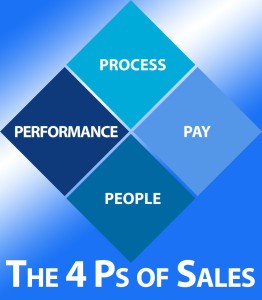 It’s no surprise that entrepreneurs and business owners are intimidated by sales. Few subjects have been more discussed, dissected, theorized about, and lectured upon than the most profitable process for selling things. Countless books, workshops, video series and training seminars are devoted to every aspect of the sales process, from the most broad generalizations of sales philosophy to the most obscure minutiae of process.
It’s no surprise that entrepreneurs and business owners are intimidated by sales. Few subjects have been more discussed, dissected, theorized about, and lectured upon than the most profitable process for selling things. Countless books, workshops, video series and training seminars are devoted to every aspect of the sales process, from the most broad generalizations of sales philosophy to the most obscure minutiae of process.
That’s always bugged me. Why does the business of sales have to seem so complicated? As entrepreneurs, why don’t we have something simple that explains the core concepts? Why isn’t there a “Four Ps of Marketing” for the sales process?
After some thought, I decided it was high time to create one. I call it the “Four Ps of Sales.” Sure, it’s a little on the derivative side, but it works.
My goal here is to explain the business side of sales in a way that anyone can understand. I’m going to skip over the technical jargon where possible, and explain the more complex ideas as we go. These aren’t difficult concepts to grasp, and they should be accessible to anyone, regardless of whether or not they have an MBA.
Let’s start with an overview of the Four Ps themselves: Process, Performance, Pay and People.
• Process: Process is simply how your sales activity is managed and optimized for a specific result. A surprising number of businesses don’t have a professionalized sales process in place, while other businesses are effectively “renting” their sales leadership, which carries substantial long-term risks. I’m a huge process guy, and I talk about it all the time. As a result, I’ll be going into great depth about determining your ideal sale process and building those optimized results in future posts.
• Performance: Performance is a measure of your sales goals, and the number of sales needed to hit those goals. Nailing this down means taking a serious look at your basic sales assumptions. Having a goal of $1 million in annual sales is meaningless unless you know how you’re going to get there. Are you selling a million things at $1 each, one thing for a million dollars, or something in between? There are many mechanical factors in play with sales performance, and plenty of questions to ask as you determine your overall sales capacity. By gathering the right data, you can create a model that will allow you to create the right sales system to meet your goals.
• Pay: How much should you pay for sales? After you’ve created the optimal process and estimated your overall sales capacity, the next task it to test your assumptions about your sales compensation. There are some key considerations at play here, such as the balancing the investment of hiring and training great salespeople against the costs to your bottom line. If you want to attract the best sales talent, you’re going to have to meet some minimum requirements when it comes to things like salary and benefits.
• People: What kind of people do you really need to sell your stuff? What level of sales experience fits into the sales structure you’ve created? How will you find them, and what kind of support will they have? Many sales processes are built around a person, and that’s inherently unsustainable. Instead of creating a process around a person, you’re creating an optimal process and then plugging the right people into it.
This is the 50,000 foot view of the Four Ps of Sales. It’s important to note that there’s a very intentional sequence here. Why is “Process” first and “People” last? It’s not that people are less important, it’s just that you need to have the right process in place in order for people to perform well in that environment. I’ll be exploring each of these points in great detail in coming posts.
